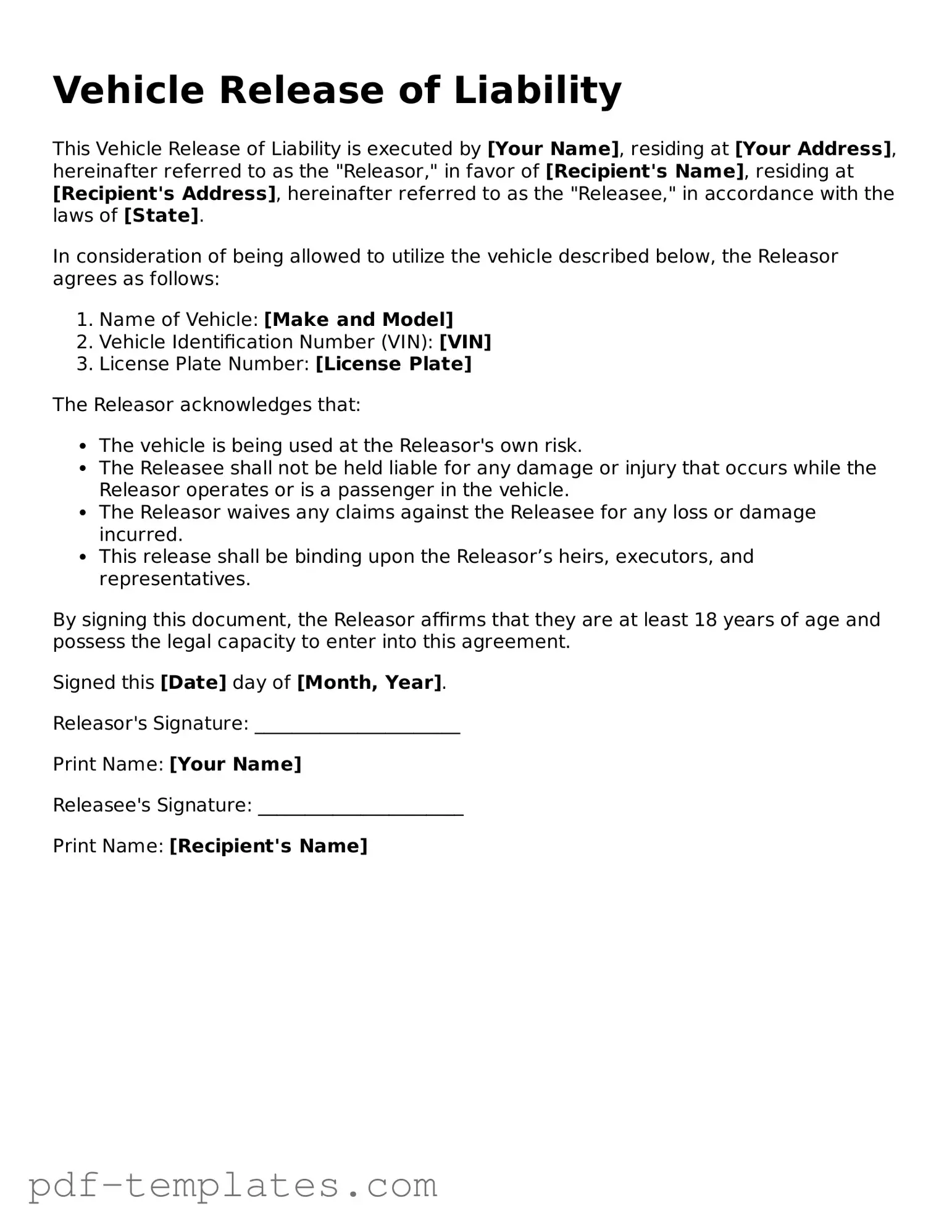The Vehicle Release of Liability form is similar to a Waiver of Liability form. Both documents serve to protect one party from legal responsibility for injuries or damages that may occur during a specific activity or event. In the case of a Waiver of Liability, individuals often sign it before participating in activities such as sports or recreational events. By doing so, they acknowledge the risks involved and agree not to hold the organizer accountable for any mishaps. This mutual understanding reduces the potential for disputes and encourages participants to engage in activities with awareness of inherent risks.
Another document that parallels the Vehicle Release of Liability form is the Hold Harmless Agreement. This agreement is often used in contracts where one party agrees not to hold the other party liable for any damages or injuries that may arise from the activities conducted. For instance, if a contractor is hired to perform work on a property, the property owner may sign a Hold Harmless Agreement to protect the contractor from claims related to injuries occurring on-site. This creates a clear boundary of responsibility and helps prevent legal complications down the line.
The Indemnity Agreement is also similar in nature. This document involves one party agreeing to compensate another for any losses or damages incurred. For example, if a business rents equipment, the rental company may require the renter to sign an Indemnity Agreement. This ensures that if the rented equipment causes damage or injury, the renter will cover the costs. Both the Indemnity Agreement and the Vehicle Release of Liability form aim to clarify responsibilities and protect parties from unforeseen liabilities.
A Release Agreement shares similarities with the Vehicle Release of Liability form as well. In a Release Agreement, one party relinquishes their right to pursue legal claims against another party, often in exchange for compensation or a benefit. This document is commonly used in settlement negotiations, where a party agrees to drop a lawsuit in return for a financial settlement. Like the Vehicle Release of Liability form, it emphasizes the importance of informed consent and the acknowledgment of risk in specific situations.
The Consent to Treat form is another document that functions similarly. This form is often used in medical settings, where a patient grants permission for healthcare providers to administer treatment. By signing this document, patients acknowledge that they understand the risks involved in the proposed treatment. While it is specific to healthcare, it shares the principle of informed consent found in the Vehicle Release of Liability form, where individuals are made aware of potential risks before proceeding.
Lastly, the Rental Agreement often includes clauses that resemble the Vehicle Release of Liability form. When renting a vehicle, for example, the rental company typically requires the renter to accept responsibility for any damages that occur during the rental period. This agreement outlines the responsibilities of both parties and often includes a release of liability for the rental company. By signing, the renter acknowledges the risks associated with driving the vehicle and agrees to take on the associated responsibilities, similar to the purpose of the Vehicle Release of Liability form.
